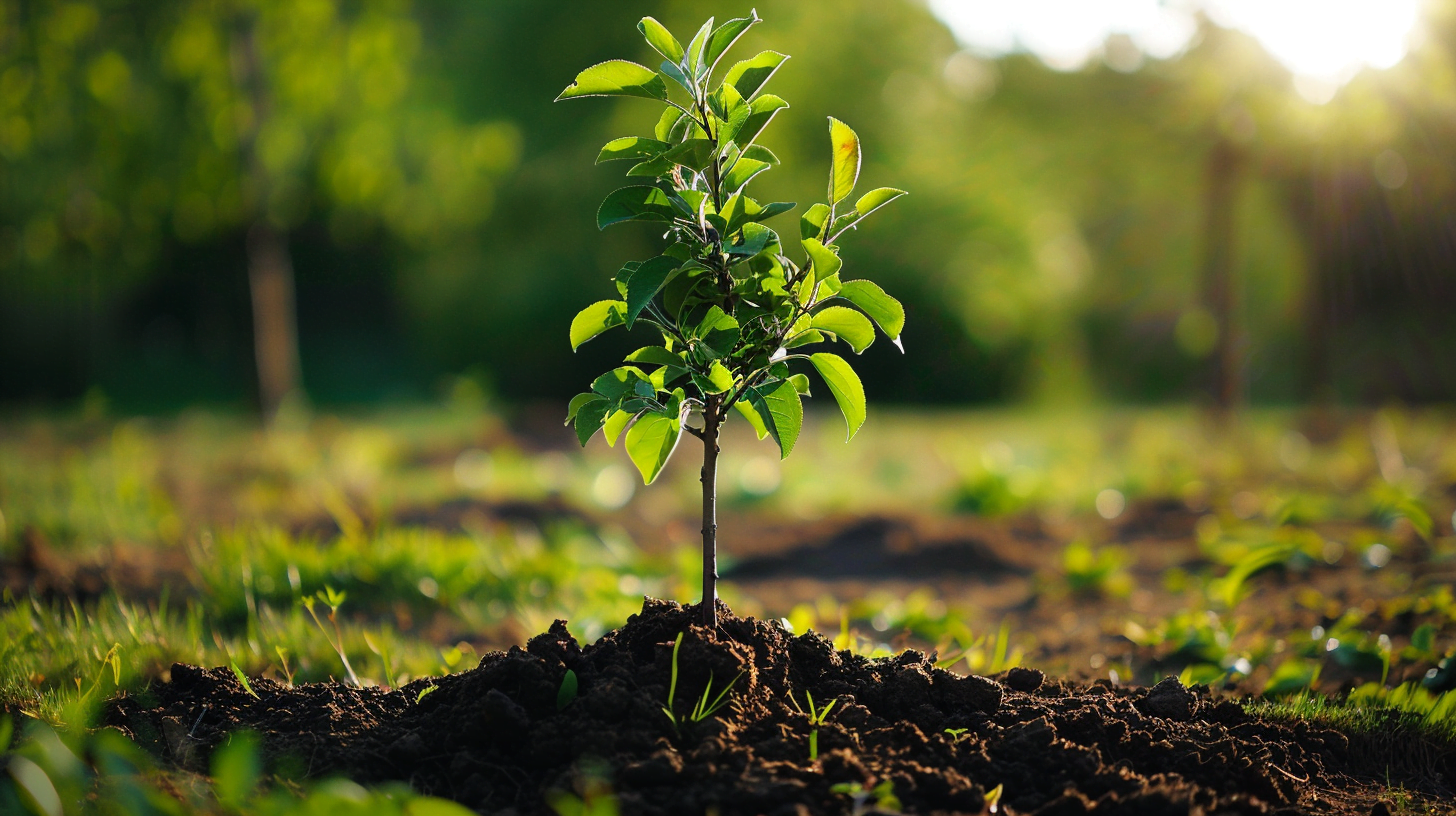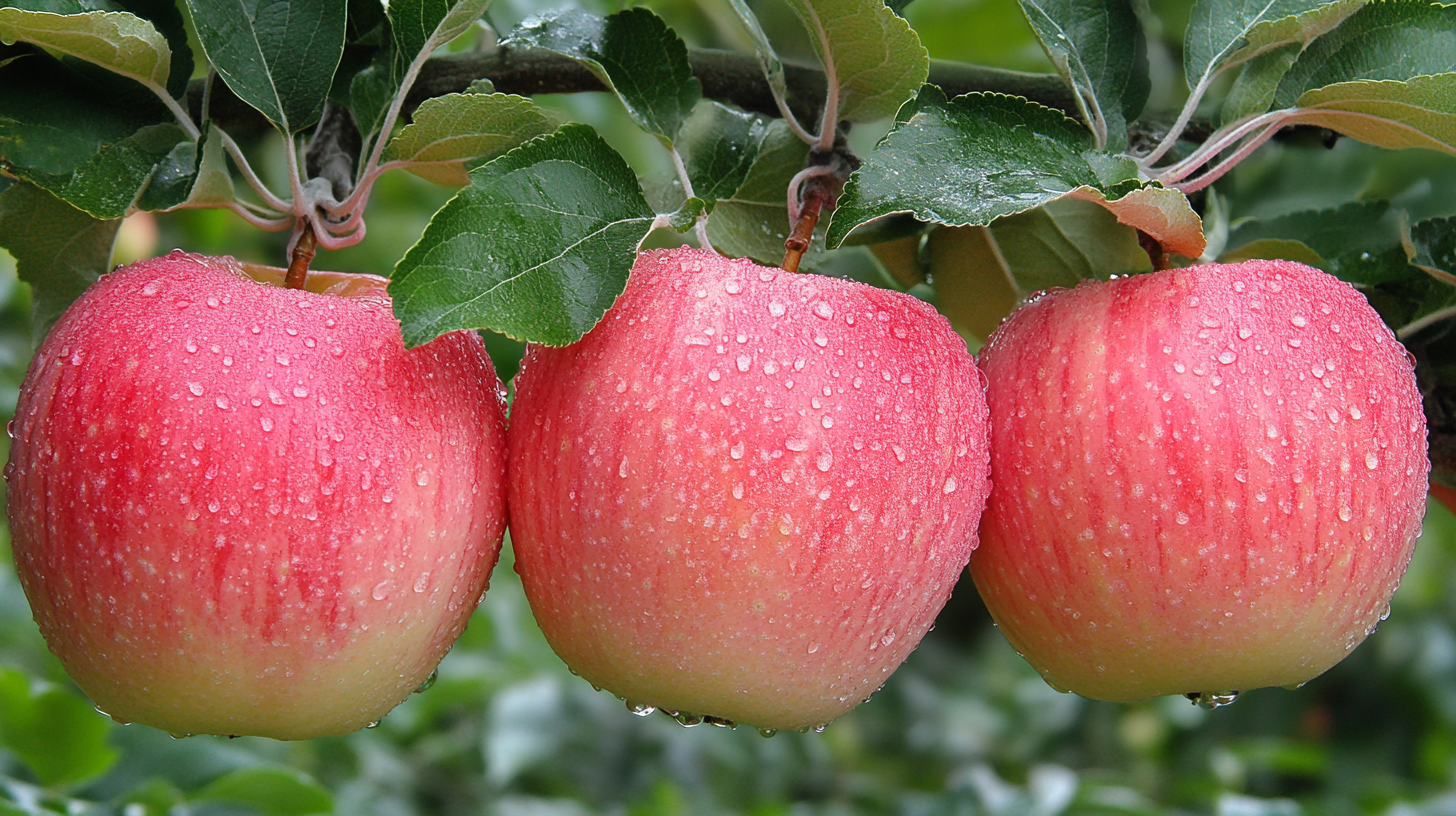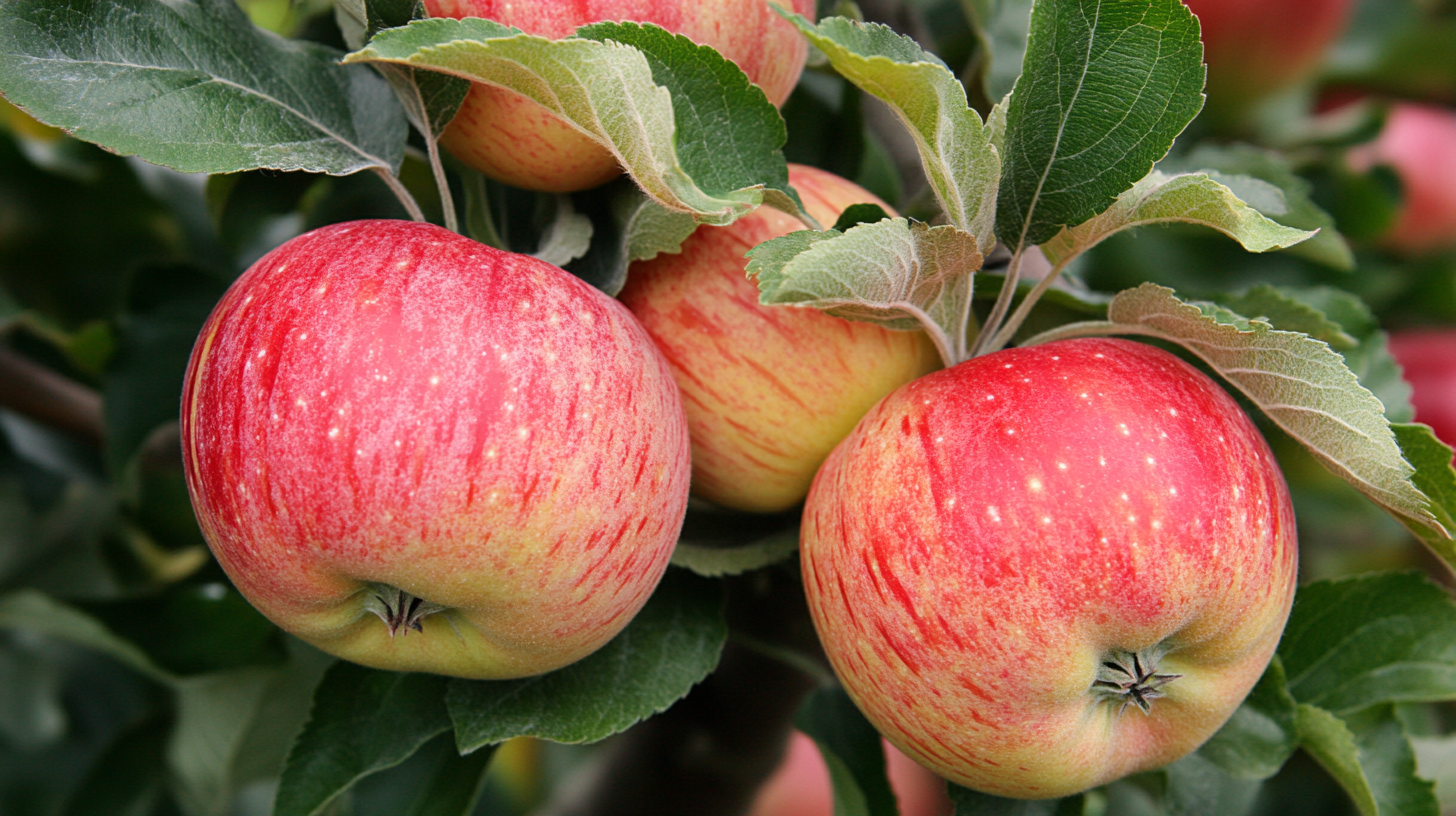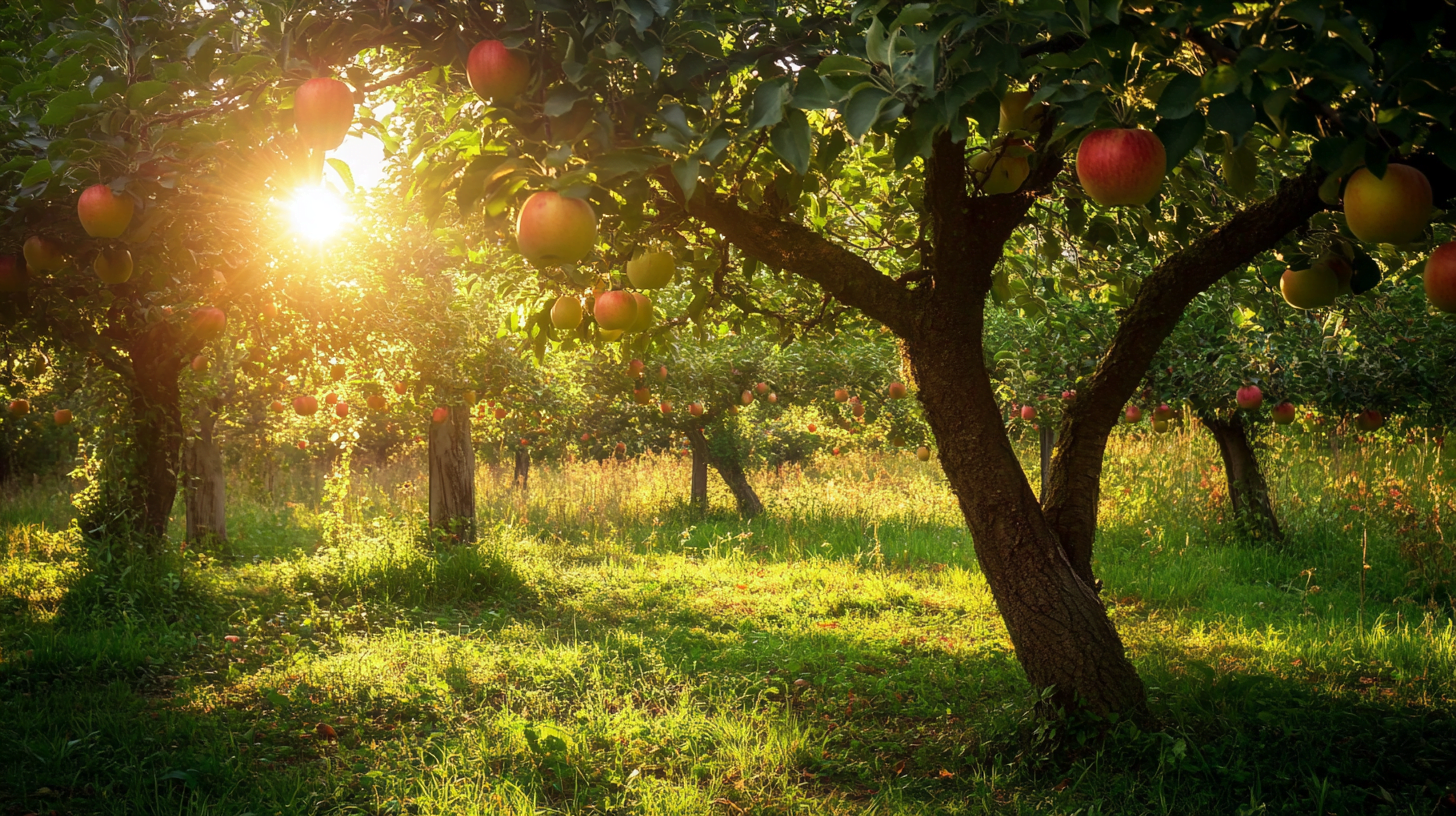Beautiful Plants For Your Interior

Table of Contents
Planting an apple tree can be a rewarding experience that provides you with fresh, homegrown fruit for years to come. Not only do apple trees offer delicious produce, but they also add beauty and value to your landscape. In this comprehensive guide, we’ll walk you through the essential steps for successfully planting and caring for your apple tree.
Choosing the Right Location
One of the most crucial factors in planting an apple tree is selecting the proper location. Apple trees require:
- Sunlight: Choose a spot that receives at least 6-8 hours of direct sunlight daily. Adequate sunlight is essential for healthy growth and fruit production.
- Soil: Apple trees thrive in well-draining, loamy soil with a pH between 6.0 and 7.0. Avoid planting in heavy clay or excessively sandy soils.
- Space: Allow enough room for your tree to grow and spread. Depending on the variety, apple trees can reach heights of 20-30 feet and widths of 15-20 feet at maturity.
Selecting the Best Apple Tree Variety
With numerous apple tree varieties available, it’s essential to choose one that suits your climate and preferences. Consider the following factors:
- Climate compatibility: Select varieties that are suitable for your hardiness zone. Consult with your local nursery or extension office for recommendations.
- Pollination requirements: Some apple varieties are self-fertile, while others need a pollinator. Ensure you have the necessary pollinator variety nearby if required.
- Desired characteristics: Think about the qualities you want in your apples, such as taste, size, color, and disease resistance.
| Variety | Hardiness Zone | Pollination | Characteristics |
|---|---|---|---|
| Honeycrisp | 3-8 | Needs pollinator | Sweet, crisp, juicy |
| Gala | 4-9 | Self-fertile | Sweet, crisp, mild |
| Fuji | 5-9 | Self-fertile | Sweet, crisp, stores well |
| Granny Smith | 6-9 | Self-fertile | Tart, crisp, green |
Preparing the Planting Site
Before planting your apple tree, prepare the site by following these steps:
- Clear the area of grass, weeds, and debris.
- Conduct a soil test to determine the pH and nutrient levels. Amend the soil as needed based on the test results.
- Dig a planting hole that is twice the width and equal in depth to the root ball of your apple tree.

Planting Your Apple Tree
The best time to plant an apple tree is in early spring or fall, depending on your climate. Follow these steps for planting:
- Inspect the tree’s roots and prune away any damaged or circling roots.
- Soak the root ball in water for 30 minutes to an hour before planting.
- Place the tree in the center of the planting hole, ensuring it is straight and at the same depth as it was in the nursery container.
- Backfill the hole with the native soil, gently tamping down to remove air pockets.
- Water the tree thoroughly to settle the soil around the roots.
“Planting an apple tree is an investment in the future. With proper care and patience, you’ll be rewarded with bountiful harvests for years to come.” – John Smith, Horticulturist
Providing Support and Protection
After planting, it’s crucial to provide your apple tree with support and protection:
- Staking: Install a sturdy stake next to the tree and loosely tie the trunk to prevent wind damage and ensure straight growth.
- Tree guard: Place a tree guard or fence around the base of the tree to protect it from wildlife and pests.
- Mulching: Apply a 2-3 inch layer of organic mulch around the tree’s base, keeping it a few inches away from the trunk. Mulch helps retain moisture and suppresses weed growth.
Caring for Your Newly Planted Apple Tree
To ensure your apple tree thrives, follow these care guidelines:
- Watering: Water your tree deeply and regularly, especially during dry spells. Newly planted trees require more frequent watering until they establish a strong root system.
- Fertilizing: Apply a balanced, slow-release fertilizer as needed, following the manufacturer’s instructions. Avoid over-fertilizing, as this can lead to excessive vegetative growth at the expense of fruit production.
- Pruning: Train and shape your apple tree through proper pruning techniques. Remove dead, diseased, or crossing branches, and promote an open canopy for better air circulation and sunlight penetration.
- Monitoring: Regularly inspect your tree for signs of disease, pests, or nutrient deficiencies. Address any issues promptly to maintain the health of your apple tree.

Conclusion
Planting an apple tree is a rewarding experience that requires proper planning, preparation, and care. By following this comprehensive guide, you’ll be well on your way to enjoying fresh, homegrown apples in the coming years. Remember to choose the right location, select a suitable variety, and provide your tree with the necessary support and care. With patience and dedication, your apple tree will thrive and produce bountiful harvests for you to enjoy.
FAQs
- How long does it take for an apple tree to bear fruit?
- Depending on the variety, apple trees typically begin bearing fruit 2-5 years after planting.
- Can I plant multiple apple trees in the same hole?
- No, it’s best to plant apple trees individually to ensure they have enough space to grow and access nutrients.
- What are some common mistakes to avoid when planting an apple tree?
- Common mistakes include planting too deeply, not providing adequate support, and failing to water regularly.
- How often should I water my newly planted apple tree?
- Water your newly planted apple tree deeply once or twice a week, or as needed to keep the soil moist but not soggy.
- When is the best time to prune my apple tree?
- Prune your apple tree during its dormant period in late winter or early spring before new growth begins.
By following this guide and staying attentive to your apple tree’s needs, you’ll be well on your way to enjoying a bountiful harvest of delicious, homegrown apples for years to come.


